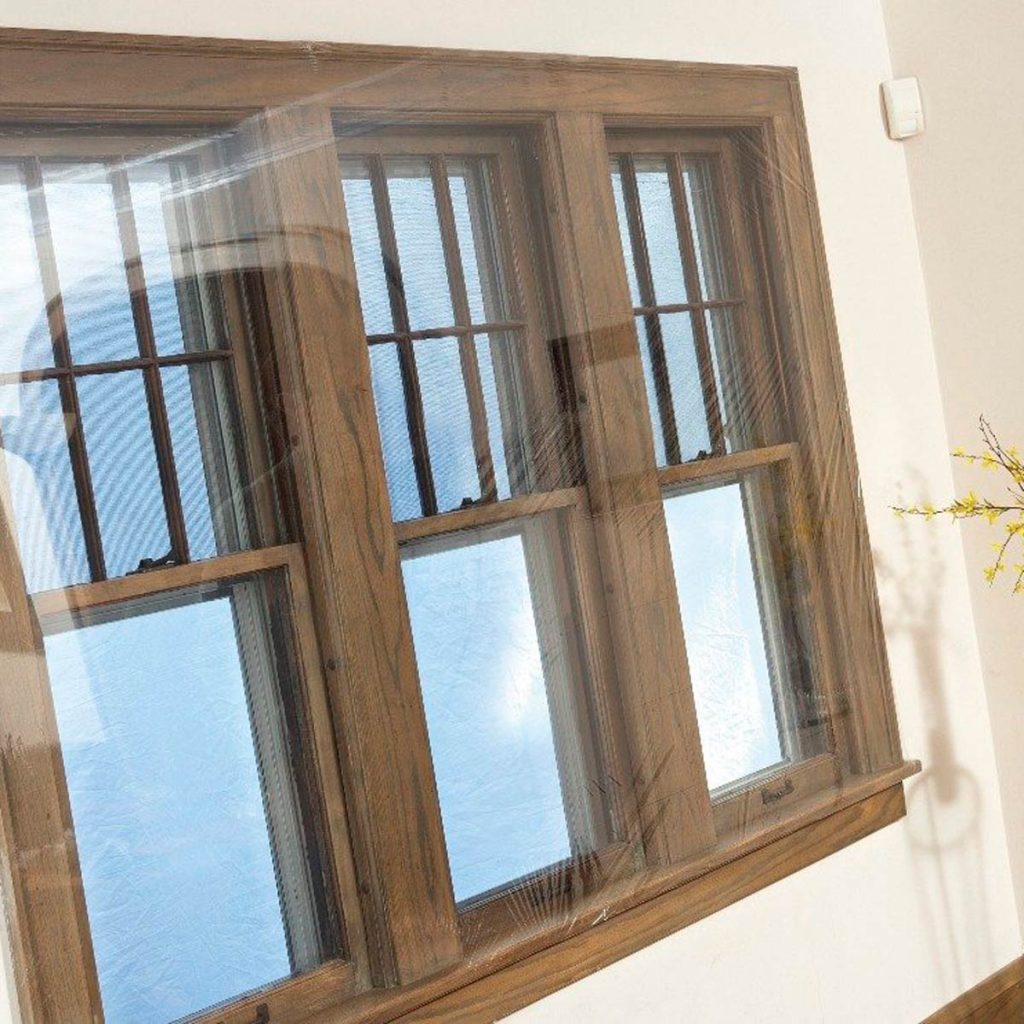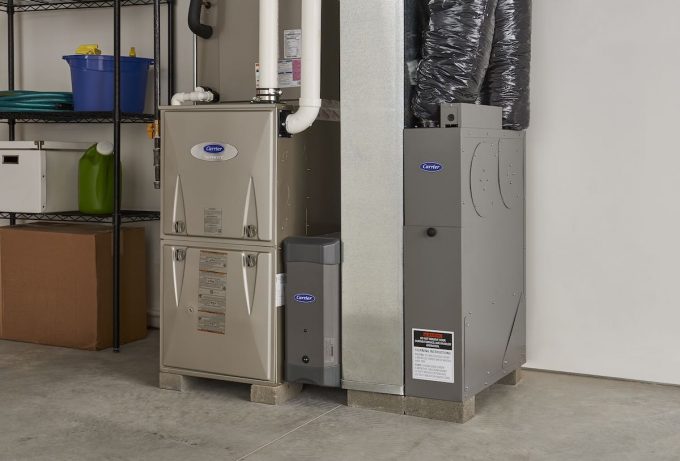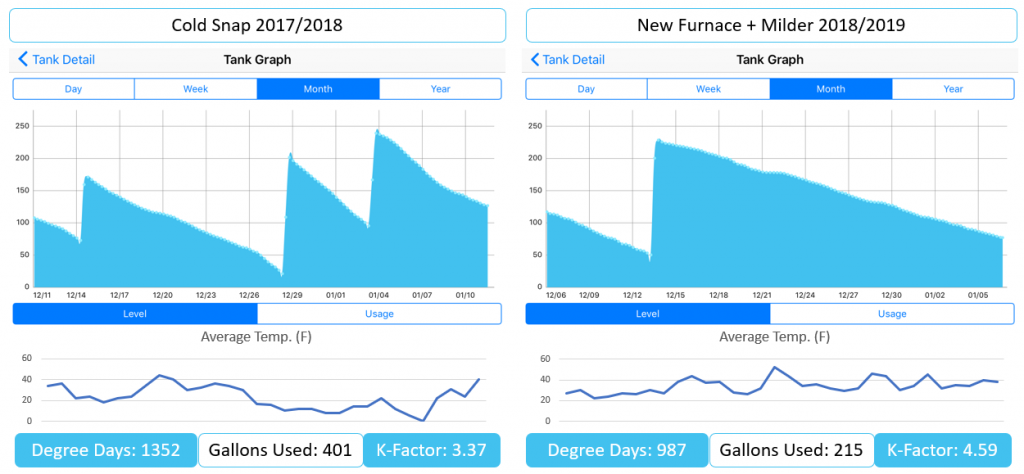If you live in a home that’s on the older side, you probably dread getting your heating bill every winter. As you might know, older homes tend to have older windows and less insulation which will require more heating oil to keep your home at a warm temperature. In this article, I’ll be sharing some tips and tricks on how to conserve your heating oil in an old home while tracking your oil usage.
Areas to Focus On
There are a lot of older houses built in Connecticut. While this does sound appealing to some, it comes with a lot of downsides! For example, if the house was built in the 1800s, then it’ll likely still have windows that were made in the 1800s. These windows are not properly sealed and if it’s windy, the wind can blow papers off tables! This is also important to know because this can cause cold air to blow in which causes the warm air to blow out! This can cause your heating bills to be very expensive!
After talking with some friends and family members who have old homes, they’ve filled me in on some ways that you can save on heating oil and conserve your heating oil as well! But first, it’s important to know the areas you’ll need to focus on first.
- Heat Loss – Find out where the heat is escaping from
- Heat Generation – Keeping your burner in good condition and ensure it’s running efficiently
- Heat Setting – Monitoring your consumption and adjusting your thermostat as necessary

Heat Loss: Where’s the Heat Going?
You might take notice that your boiler or furnace could be working overtime. If this is the case, you probably have heat escaping from your home. Usually as warm air escapes, cold air will replace it. This will naturally lower the indoor air temperature of your home. Some key places to take a look for possible escape points would be the following:
- Windows
- Walls
- Doors
- Ducts
Windows
Single-pane windows will tend to create more appeal in a lot of older homes. But, they usually do very little in terms of keeping the heat in. Modern windows are normally two-pane with air pockets in between. This small pocket of air will allow as a sort of insulation to keep the heat in your home. If your home uses single-pane windows, you can apply a thin layer of plastic film to provide another seal. It’s easy to install and all you have to do is cut it to size and apply some double-sided tape to keep it steady. Once you’ve secured it, you can use a hair dryer to shrink the plastic wrap in place. If you do it properly, it won’t even be noticeable! This will ultimately make the home feel a lot more comfortable!

Walls
Walls can also tend to be a major contributor to the loss of heat. Due to this, you should consider adding insulation to help you keep the heat in your home. Insulation that’s blown in is usually more cost-effective and can be subsidized through energy auditing from your state. However, the state must offer it. Once you’ve added the extra insulation, you should see a rapid decrease in heating oil usage almost immediately.
Doors
This might seem like a no-brainer, but because doors and always being opened and closed throughout the day, it is unlikely that the door is sealed perfectly shut. Due to this, you’ll often have a draft coming from your exterior doors. This is especially common on the bottom of the door. When it’s cold out, place your hand near the door’s base. If you can feel cold air, you should consider putting down a “door sweep” or “draft blocker”. Many types of these vary in degree of installation, difficulty, and effectiveness. The simplest options can usually be slid right under the door without the use of screws and will do a job of keeping out the cold.
Duct Work
This one might come as a big surprise for many. But the ductwork in your home is very important. A lot of old homes will tend to have “forced hot air” as their form of heating. With a setup like this, your basement furnace will heat air using a heat exchanger. Once the air is hot, the furnace will blow that hot air through the ducks throughout the house. Meanwhile, it will suck air in through the “return vents” throughout the home. Because the room ducts will bring in room-temperature air from the house, the furnace won’t have to heat the cold air from the outside.
But some basements can be VERY cold and unheated. As a result of this, usually, the air in the basement will be constantly cooling the ducts. This can make your furnace work extra hard because it will unintentionally be heating your basement. You can wrap the ducts in insulation to help keep the heat headed to its destination. It will also keep the return air from being cooled unnecessarily when it makes its return to the furnace. The insulation will also help seal any leaks in the ducks which will prevent the hot air from escaping and keep it inside the vents.
Heat Generation: Ensuring that Your Burner is in Good Condition
Your home’s boiler or furnace is the equivalent of a car engine. It produces heat for the home so that you can stay warm. Just like it’s important to change the oil on your car, getting your burner serviced is something that should happen regularly. Annual cleanings and tune-ups will help HVAC technicians notice any possible issues before they happen. Making sure that you stay ahead of the issues with your system will help ensure that your heat will stay on all winter and save you a lot more money in the future.
You should do a furnace tune-up at least every other year. But it is highly recommended to do one every year.
Getting a furnace tune-up done yearly will also help with fatal and dangerous issues. Such as a crack in your heat exchanger. This can cause deadly exhaust gases to enter your home. These fumes contain Carbon Monoxide which is very dangerous to inhale. If this happens, then it’s time you replace your furnace.
Usually, oil-fired furnaces are built to last for 20-30 years. However, if your system is much older than 20 years old, you should consider getting it replaced. Newer systems tend to be much more efficient, and quiet and generally output more heat than older systems. Getting a tank monitor like the Smart Oil Gauge will be able to help you collect data on your heating oil usage and level. It can help you calculate how much oil is being burned and can help you figure out how much a new system will save you in the long run.

Heat Setting: Monitoring your Consumption and Adjusting the Thermostat
Installing a Smart Oil Gauge is one of the best things that you can do to monitor your heating oil consumption and usage. The Smart Oil Gauge will show you daily, weekly, monthly, and yearly consumption and usage data. By keeping an eye on this information in an old home, you’ll be able to determine where you can improve your home’s heating capabilities. You can use the Smart Oil Gauge in conjunction with a programable thermostat to adjust your home temperature remotely! This will ultimately help lower your overall oil consumption.
With homes that have radiators and boilers, it will take a much longer time to reheat the home. What our Smart Oil Gauge data shows us is that leaving the temperature the same for the entire day will keep the usage of your oil fairly low. Especially if you have insulation in your home, this will make you burn less oil throughout the day because your insulation is not only keeping your house warm, but the temperature isn’t changing much at all either.
One of the best things that the Smart Oil Gauge offers is being able to analyze your savings between a new and an old furnace. You can download your data by logging onto the website and exporting it to a Microsoft Excel spreadsheet. You can do this however often you’d like, but if you do it between the usage of a new and old furnace system, you can compare the data side by side.
Determining your K-Factor
The K-Factor is basically how long your heating oil will last you in your heating oil system. To fully understand the math problem, there is another important factor to know. Degree days is a figure that is normally used to determine how much heat is needed to heat a home on a specific day. If we use a baseline of 65 degrees Fahrenheit and subtract the average outdoor temperature from 65, then we’ll get our total degree days.
For example, if the average temperature outside is 25 degrees Fahrenheit, then we’ll have to do the following equation 65 – 25 = 40-degree days. In Connecticut, we usually see an average of around 5,900 degree days over a full year.
Comparing Usage with an Old and New Furnace
With the use of exported data from a Smart Oil Gauge, you can determine your K-Factor from your old furnace by taking the average amount of oil burned throughout the year. This can depend on where you live to determine your degree days, but it can change depending on where you are in the United States.
With a new furnace, however, your K-Factor will likely increase. This means that you will end up using less oil per year when you would be ultimately using more on your old furnace. This could save you hundreds of dollars yearly and can be helpful to ensure that you are getting the best price for your heating oil!

Conclusion: Older Homes and Heating Oil
The first question that you should probably ask yourself is where can you save the most money on heating oil? A new furnace would be the best way to go about saving money. But, it will normally cost you a couple of thousand dollars to be able to get one installed, and it might not even be right away. Due to this, there are a lot of DIY methods to prevent high oil consumption. You can get various things for your home such as plastic wrapping your drafty windows and getting draft stoppers for your doors!
You can also get a proper handle on your oil usage/consumption by installing a Smart Oil Gauge. This will be able to show you exactly how much heating oil you are burning and will help you optimize how much oil you can save. Getting a programmable thermostat on top of the Smart Oil Gauge will help you optimize your consumption and start saving a lot more oil!
After you’ve taken the necessary steps to ensure your home’s heat doesn’t escape, be sure to check out our FuelSnap page! FuelSnap will help you find local dealers in your area with the best prices available to you!
Happy Heating,
Hunter



